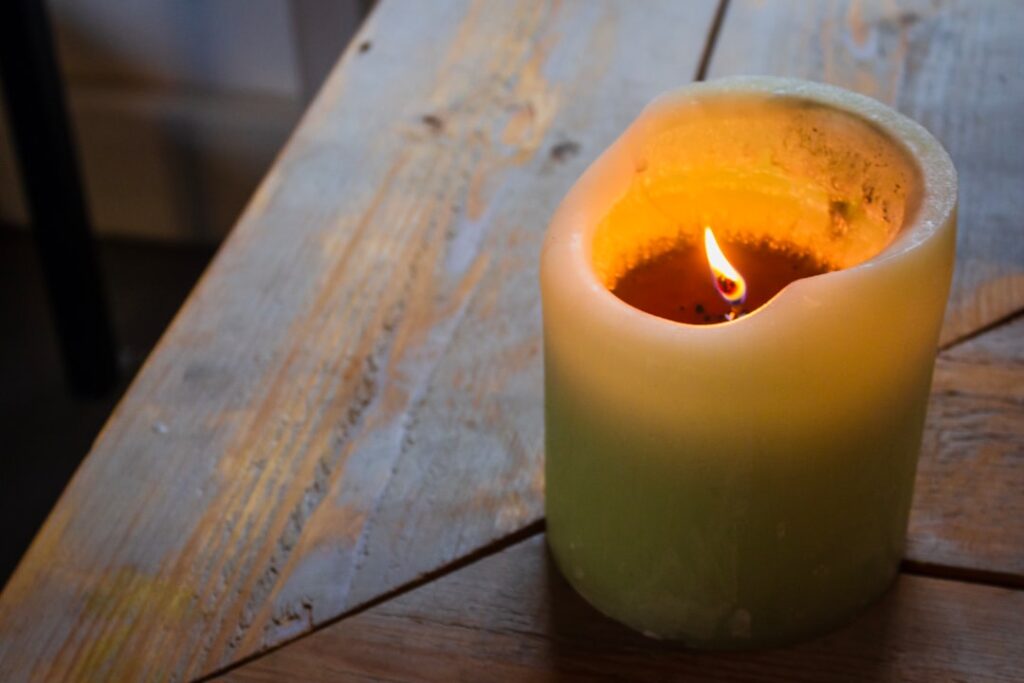The soft flicker of a candle on a warm summer evening is an undeniable pleasure. When that candle is infused with citronella, it promises a tranquil, bug-free ambiance. The DIY citronella candle has become a staple of summer crafting, lauded as a natural and stylish alternative to chemical sprays. But how effective are these homemade solutions, really? It’s time to move beyond anecdotal charm and look at the data to separate scientific fact from popular myth.
Myth 1: Citronella Candles Create a “Force Field” of Protection.
The popular belief is that lighting a few citronella candles erects an invisible, impenetrable barrier that mosquitoes dare not cross. The reality, according to scientific analysis, is far more localized and nuanced.
Mosquitoes are drawn to the carbon dioxide (CO2) we exhale, along with our body heat and specific skin odors. Citronella oil works not as a true repellent that drives insects away, but primarily as a masking agent. The strong scent of burning citronella, which contains compounds like citronellal, citronellol, and geraniol, interferes with the mosquito’s olfactory receptors, making it harder for them to locate their target—you.
A study published in the Journal of Insect Science found that while citronella candles could reduce the number of mosquito bites by up to 50%, their efficacy is highly dependent on environmental conditions. A gentle breeze is enough to disperse the protective scent cloud, rendering the candle ineffective for anyone not sitting directly in the path of its smoke. The takeaway is data-driven: a citronella candle offers a modest zone of confusion for mosquitoes, not an impenetrable shield. For true effectiveness, placement is critical—think close proximity, not broad area coverage.
Myth 2: The More Citronella Oil, the Better the Candle.
When embarking on a DIY project, it’s tempting to think that “more is more.” If citronella oil is the active ingredient, then adding a generous amount should create a super-powered candle, right? This assumption is not only incorrect but potentially hazardous.
Candle making is a science of ratios. Wax can only hold a certain percentage of fragrance oil, typically referred to as the “fragrance load.” For most container waxes like soy wax, the maximum recommended fragrance load is between 6% and 10% by weight. Exceeding this limit doesn’t increase the scent throw; instead, the excess oil will fail to bind with the wax, potentially pooling on the surface. This can create a significant fire hazard and cause the wick to clog, resulting in a poor-burning, smoky candle.
For a standard one-pound (16 oz) batch of soy wax, a 6% fragrance load translates to approximately 0.96 ounces of essential oil. This concentration is the data-backed sweet spot for balancing scent efficacy with burn safety and performance.
Myth 3: Any “Citronella Oil” Will Suffice.
A quick search for citronella oil reveals numerous options, but not all are created equal. The botanical source of the oil has a significant impact on its chemical composition and, therefore, its effectiveness.
There are two primary species used for citronella oil distillation:
1. Ceylon type (Cymbopogon nardus): This is a common and often less expensive variety.
2. Java type (Cymbopogon winterianus): This type is generally considered superior for insect-masking purposes.
The key difference lies in the concentration of its active components. Java-type citronella oil contains significantly higher levels of citronellal (up to 35-45%) and geraniol (up to 25%), the two main compounds responsible for confusing mosquitoes. When purchasing your oil, look for the botanical name Cymbopogon winterianus on the label to ensure you are using the most potent ingredient available.
A Data-Driven DIY Citronella Candle Recipe
Armed with this information, you can create a candle that is not only stylish but also optimized for performance.
Ingredients:
* 1 lb (453g) natural soy wax flakes
* 1 oz (28g) high-quality, Java-type (Cymbopogon winterianus) citronella essential oil
* Lead-free cotton or wood wicks suitable for your container size
* 4-5 heat-proof containers (e.g., small glass jars, ceramic pots)
Instructions:
1. Measure: Using a kitchen scale, weigh out 1 lb of soy wax flakes. Weigh out 1 oz of your Java-type citronella oil. This achieves a precise 6% fragrance load.
2. Melt: Set up a double boiler. If you don’t have one, place the wax in a heat-proof pouring pot and set it inside a larger saucepan filled with a few inches of water. Melt the wax over medium heat, stirring occasionally, until it reaches 185°F (85°C).
3. Cool & Add Scent: Remove the wax from the heat and let it cool to around 175°F (79°C). This temperature helps the oil bind properly with the wax. Gently stir in your measured citronella oil for two full minutes.
4. Set & Pour: Secure your wicks to the bottom center of your containers. Slowly pour the scented wax into the containers.
5. Cure: Allow the candles to cool and cure at room temperature for at least 48 hours before lighting. Curing allows the fragrance to fully integrate with the wax for a better scent throw.
By following this evidence-based approach, you can enjoy your beautiful, handmade citronella candles with a realistic understanding of their role: a stylish, fragrant, and moderately effective component of a broader strategy for enjoying peaceful summer evenings. For maximum protection, supplement your candles with other proven methods like using an oscillating fan (mosquitoes are weak flyers) and eliminating any standing water in your yard.
Photo by Louis Hansel on Unsplash

